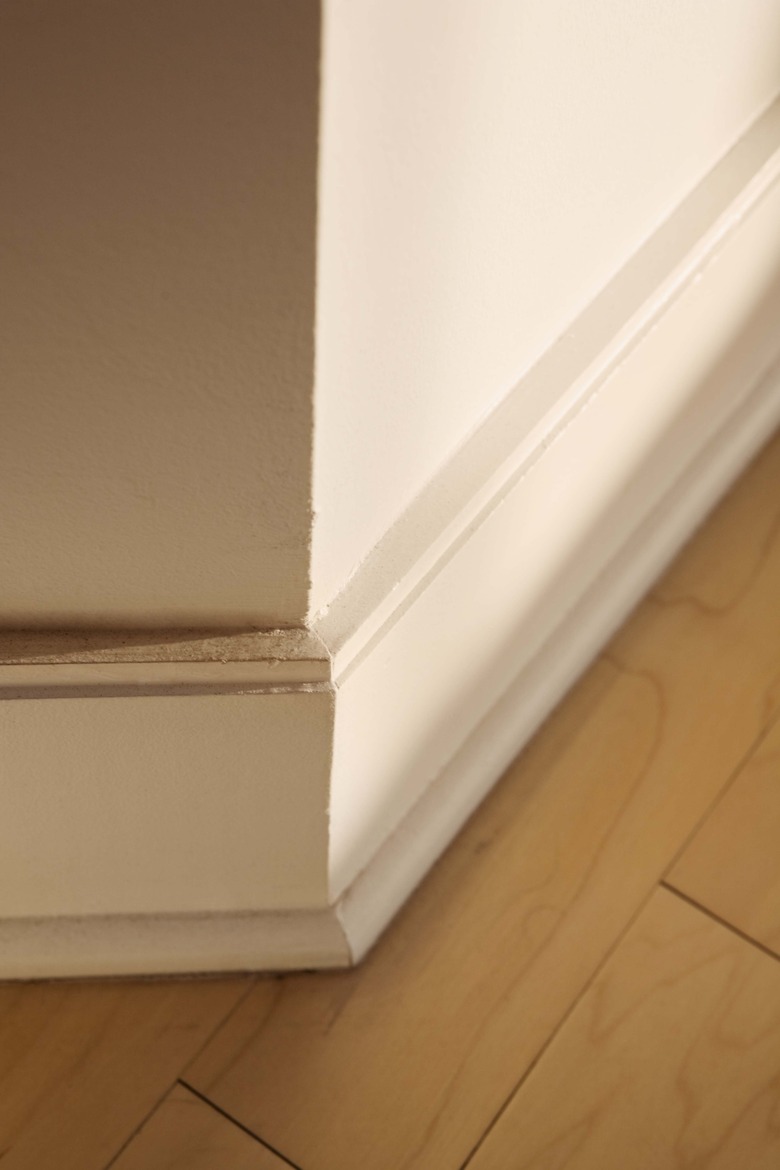How To Cut A Baseboard On Uneven Floors
Things Needed
-
Carpenter's level
-
Hammer
-
Nails
-
Compass
-
Circular saw
-
Sandpaper
-
Finish nails
Successful placement of a baseboard creates a level line against the wall at the top of the board while maintaining a position that's flush against the floor. When the floor is uneven, you must cut the baseboard along the bottom to create that flush setting. Making the cut is not a difficult process. With the right set of tools, you can duplicate the unevenness in the floor on the bottom of the board, creating a baseboard cut specifically for your floor's changing levels.
Step 1
Place the baseboard onto the wall about 1/4 inch from the floor surface. Set a carpenter's level over the board to make certain that you've positioned it level.
Step 2
Attach the board to the wall by tacking it into place with a few nails placed through every three or four wall studs. Use just enough nails to prevent the board from moving while you draw the cut line.
Step 3
Set the compass points to 1/4 inch apart. Place the point of the compass even with the floor against the wall and the pencil against the baseboard slightly above the board's bottom.
Step 4
Drag the compass point along the floor, drawing a line across the bottom of the baseboard as you do so. When the floor surface changes due to its unevenness, the line on the drawn board will change as well, mimicking the changes in floor height. Continue drawing the line until you reach the end of the board.
Step 5
Remove the board from the wall with a prybar at the nailed-in spots. Take care not to break the board by pulling it away in increments evenly spaced down its length. Remove the nails from the board with the claw end of the hammer.
Step 6
Place the board onto a cutting surface. Set the circular saw blade depth to the depth of the board, and on a 5-degree bevel with the face of the cut toward the wall. Trim the board along the penciled line to create a perfect fit with the changing floor height. Sand the bevel away to create a level cut at the marked line with sandpaper.
Step 7
Return the board to the wall and set it flush against the floor. It should settle against the floor, following the changes along its length while remaining level along the top of the board. Nail the board into place by driving a finish nail through the board and into each stud in the wall it's set against. Use the same nail holes used to tack the board into place to avoid excess holes in the baseboard.
